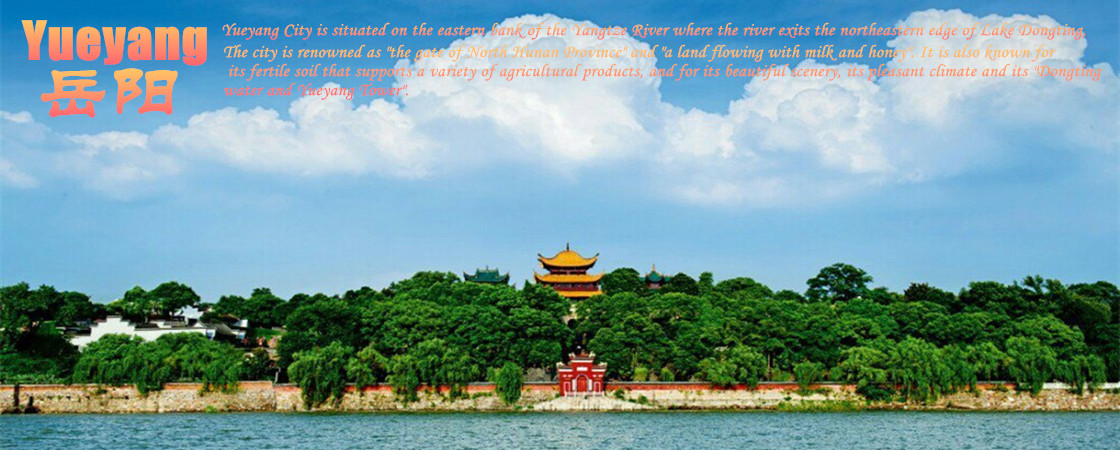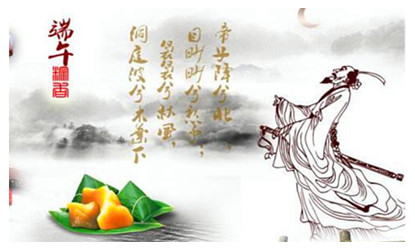Skype: neodalle-travel
Tel: +86 135 7447 2266
E-mail: sales@visitaroundchina.com

 The area of Yueyang enjoys a time-honored history. Human activity can be traced back to 9,000 years ago within the boundaries of Yueyang where the ancestors made a living with stone tools and developed the ancient civilization.
The area of Yueyang enjoys a time-honored history. Human activity can be traced back to 9,000 years ago within the boundaries of Yueyang where the ancestors made a living with stone tools and developed the ancient civilization.
The administrative region of the area in the Xia (c. 2070-c. 1600 BC) and Shang (c. 1600-c. 1046 BC) Dynasties fell within the scope of ancient Miao clans.
During the Spring and Autumn Period (770 BC-476 BC), the area was brought into Chu kingdom's territory, serving as the client state of Mi and Luo Kingdoms.
During the period of the Warring State (475 BC-221 BC), the area became a Qianzhong Jun (prefecture) of Chu kingdom.
During the Qin Dynasty (221BC-207BC), the eastern area belonged to Luo Xian (county) of Changsha Jun (prefecture) while the western area belonged to Nan Jun (prefecture) and Qianzhong Jun (prefecture).
In the first year of Emperor Gaozu of the Han Dynasty (206 BC), the eastern area was a part of Xiajuan County and Luo County of Changsha kingdom whereas the western area was a part of Huarong County of Nan Jun (prefecture) and Chanling County of Wuling Jun (prefecture).
In the 15th year of Jian An in the Eastern Han Dynasty (210 A.D.), Sun Quan (182-252), the founder of the state of Eastern Wu during the Three Kingdoms period, established Hanchang Jun (prefecture) on the basis of Xiajuan County and Luo County and set up its county town (the 'capital' of a county) in present-day Jinpuguan of Pingjiang County.
In the first year of Taikang in the Jin Dynasty (280), Emperor Wu developed Xiajuan County into Baling County.
 Baling Jun (prefecture) was established in the 16th year of the Southern Dynasty during the reign of the Emperor Yuanjia.
Baling Jun (prefecture) was established in the 16th year of the Southern Dynasty during the reign of the Emperor Yuanjia.
In the ninth year of Kaihuang of Sui Dynasty (589), Baling Jun (prefecture) was altered into Bazhou. Its name was changed to Yuezhou two years later.
In the Yuan Dynasty (1279 A.D.-1368 A.D.) it was known as Yuezhou Lu (route) and in the Ming Dynasty (1368-1644) as Yuezhou Fu (prefecture).
In the second year of the Republic of China, Yuezhou Fu (prefecture) was abolished and replaced by the First Hunan Administrative Superintendent District, taking the name Yueyang County in place of its former county name Baling. During July 5th to 25th of 1949, all counties within the boundaries were all liberated. The current eastern part of Yueyang was under the jurisdiction of Changsha Special Zone and Xiangtan Special Zone successively while the western Huarong County was under the jurisdiction of Changde Special Zone. In January 1960, Yueyang held municipal status to Yueyang City from Chengguang Town of Yueyang County, though it reverted to the previous Chengguang Town in October 1962. In September 1964, Yueyang Special Zone was set up, governing counties of Yueyang, Linxiang, Huarong, Pingjiang and Xiangyin.
In February 1966, Xiangyin County was divided into Xiangyin County and Miluo County. With the restoring of the name of Yueyang City in December 1975, a separate governance system of county and city was carried out. In October 1982, the administrative division of Yueyang County was cancelled and merged into Yueyang City. In July, 1983, Yueyang City was upgraded as a municipality directly under the jurisdiction of province, therefore, the administrative divisions were set up at city level and local level. In January, 1986, Yueyang Special Zone was canceled. The counties which used to be part of the Zone were governed by the upper level municipality.
In 1992, Yueyang was honored as an open city along the Yangtze River. In 1994, it was included in the list of national famous historical and cultural city.
In April 1996, Yueyang Tower District and Junshan District were established with the cancelation of South District and Suburbs District. At the same time, North District was renamed as Yunxi District. In 2000, the administrative division of Huanggaihu Farm was canceled to build a town and merged into Linxiang City. Likewise, relevant towns which used to be part of Junshan Farm and Qianlianghu Farm were under the jurisdiction of Junshan District. In December of the same year, Quyuan Administrative District was established and therefore removed the administrative division of Quyuan Farm.
 Ask Questions ?
Ask Questions ?